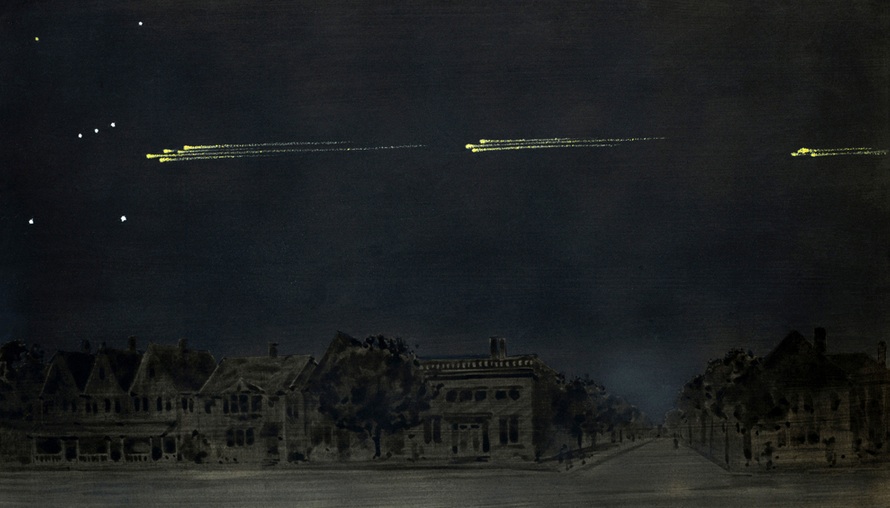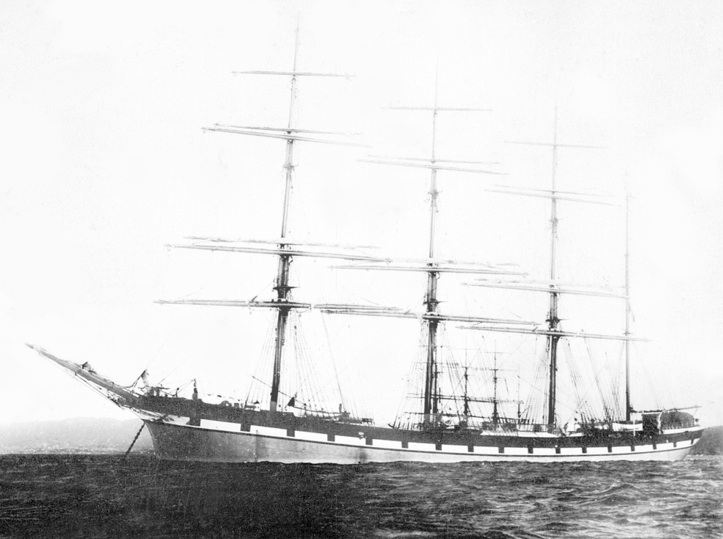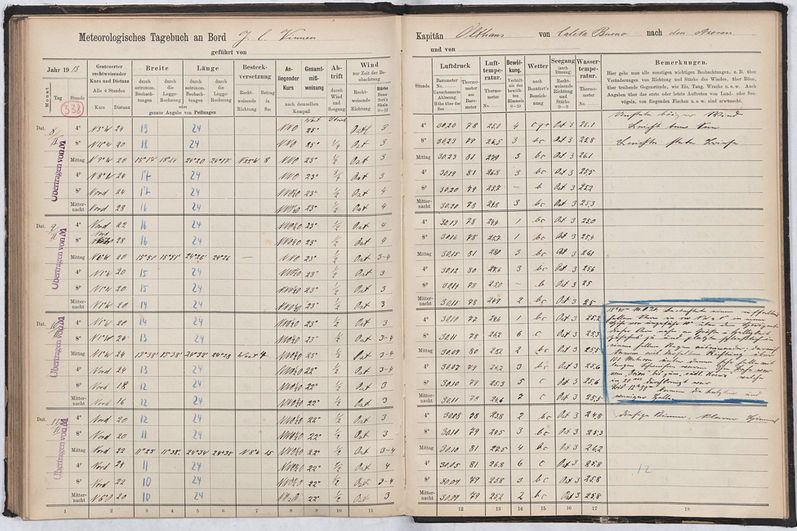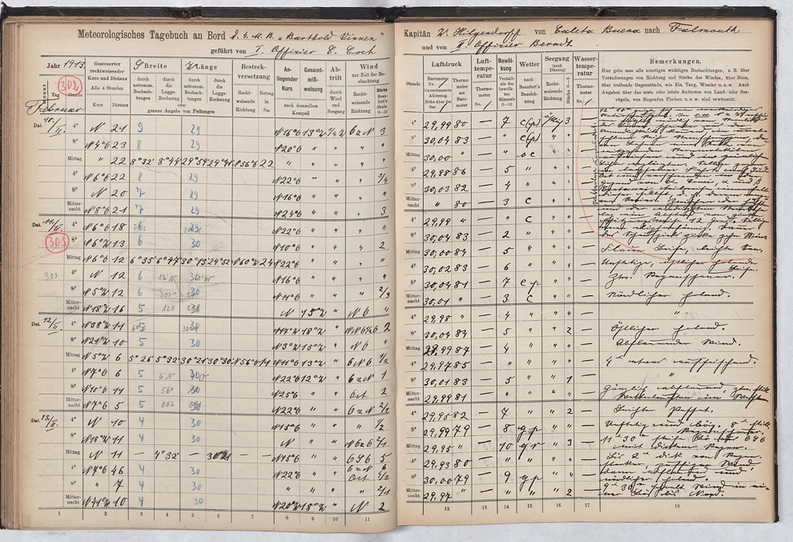Astronomer Sleuths Chase 100-Year Meteor Mystery (Photos)
1913 Meteor Procession in Toronto
This painting by artist and amateur astronomer Gustav Hahn depicts the meteor procession of Feb. 9, 1923 as observed in High Park, Toronto. Hahn estimated that the fireballs passed about halfway between Rigel and the Belt of Orion.
A Sketch of the 1913 Meteor Procession
Walter Haight observed the meteor procession from Parry Sound on Georgian Bay in Ontario and sent a sketch to Clarence A. Chant at the University of Toronto. Haight, who depicted himself as the small figure at the fence in the lower left, remarked that the procession “moved with unprecedented slowness on a level plane … Never have I seen bodies in the heavens move at such a slow, stately and measured pace. That remains the most outstanding and remarkable feature of a most entrancing spectacle.”
Map of 1913 Meteor Procession
The red dots mark locations where the meteor procession of February 9, 1913, was observed. The accounts from the ships at latitudes south of the S.S. Newlands were discovered during the preparation of this article. The ground track, projected onto the rotating Earth, deviates somewhat from a great circle, with the southern part of the track shifted several degrees to the west because of the rotation of the Earth during the time of flight from Canada to the shipping lanes below the equator. To travel so far around the curvature of the Earth, the members of the 1913 meteor procession apparently followed tracks similar to the gradual reentry of satellites in low Earth orbit.
Crew of Sailing Ship Watch 1913 Meteor Procession
The crew of the sailing ship J. C. Vinnen, a four-masted steel-hulled barque, watched the 1913 meteor procession from the location 24°29' W, 14°41' S, making this report the most southerly known observation of the fireballs.
J.C. Vinnen Log Book of the 1913 Meteor Procession
Ship’s logbooks from the early 20th century are preserved in the German Meteorological Service archives. These pages from the logbook of the sailing ship J. C. Vinnen for February 1913 record the positions of the vessel each day at noon, from which the position at the time of the meteor procession can be estimated as 24°29' W, 14°41' S. The remarks column on the right describes more than 100 meteors observed on February 10 as they followed a path in the sky from Orion to the Southern Cross.
Uncounted Stars: 1913 Meteor Procession
Ship’s logbooks from the early 20th century are preserved in the German Meteorological Service archives. These pages from the logbook of the sailing ship Barthold Vinnen for February 1913 record the positions of the vessel each day at noon, from which the position at the time of the meteor procession can be estimated as 29°51' W, 9°36' S. The remarks column on the right describes “a strange spectacle of nature” on February 10 when “an uncounted number of shooting stars” appeared north of Leo and passed slowly across the sky until they disappeared near Crux and Centaurus.
Breaking space news, the latest updates on rocket launches, skywatching events and more!

Space.com is the premier source of space exploration, innovation and astronomy news, chronicling (and celebrating) humanity's ongoing expansion across the final frontier. Originally founded in 1999, Space.com is, and always has been, the passion of writers and editors who are space fans and also trained journalists. Our current news team consists of Editor-in-Chief Tariq Malik; Editor Hanneke Weitering, Senior Space Writer Mike Wall; Senior Writer Meghan Bartels; Senior Writer Chelsea Gohd, Senior Writer Tereza Pultarova and Staff Writer Alexander Cox, focusing on e-commerce. Senior Producer Steve Spaleta oversees our space videos, with Diana Whitcroft as our Social Media Editor.






